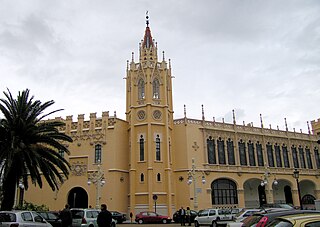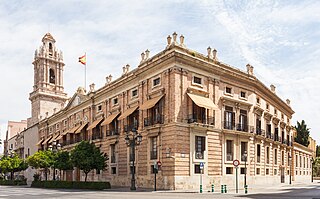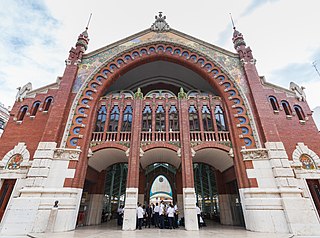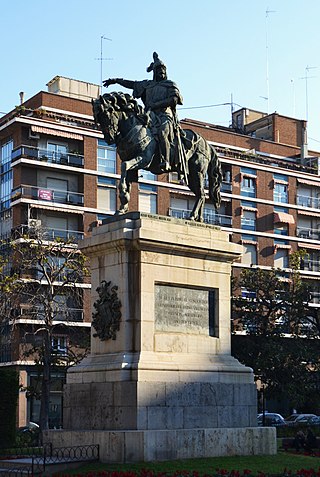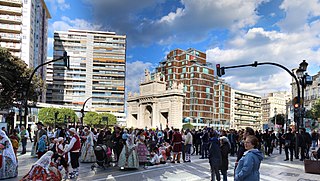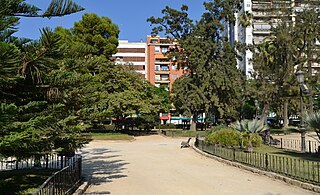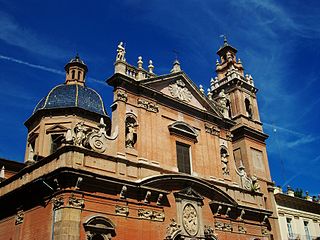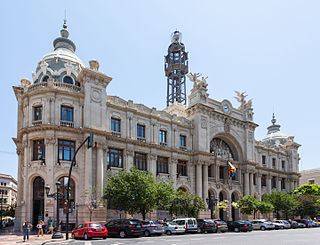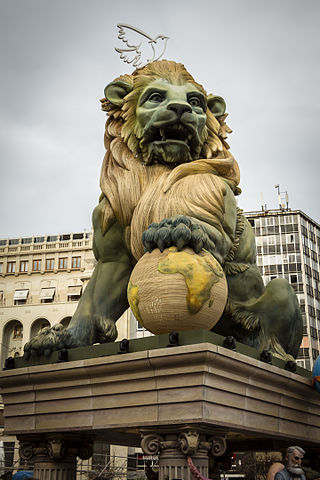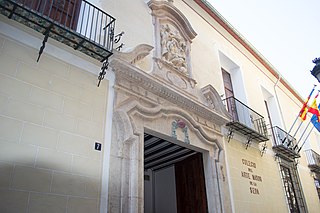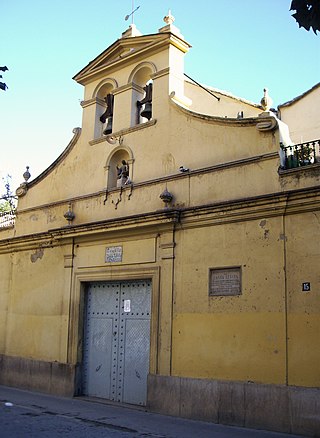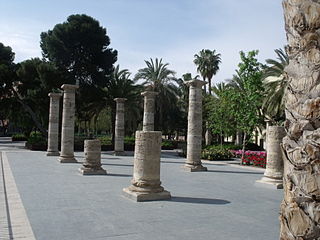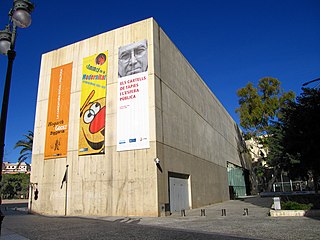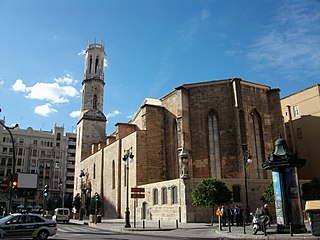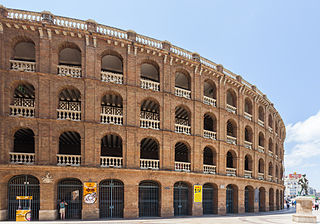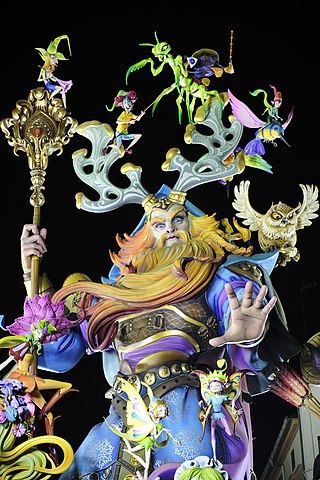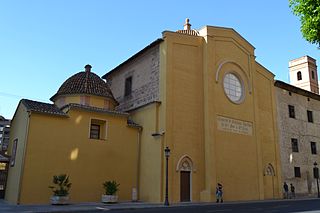Self-guided Sightseeing Tour #5 in Valencia, Spain
Legend
Guided Free Walking Tours
Book free guided walking tours in Valencia.
Guided Sightseeing Tours
Book guided sightseeing tours and activities in Valencia.
Tour Facts
7.3 km
190 m
Experience Valencia in Spain in a whole new way with our free self-guided sightseeing tour. This site not only offers you practical information and insider tips, but also a rich variety of activities and sights you shouldn't miss. Whether you love art and culture, want to explore historical sites or simply want to experience the vibrant atmosphere of a lively city - you'll find everything you need for your personal adventure here.
Activities in ValenciaIndividual Sights in ValenciaSight 1: Palau de l'Exposició
The exhibition palace is a municipal building in the city of Valencia, located on Galicia Street no. 1. It was built in 1908 by the architect Francesc Mora i Berenguer following the Valencian modernist style and the neo -Gothic.
Sight 2: Convent de Sant Doménec
The Convent of Santo Domingo was a convent of the Dominican Order in the city of Valencia, Spain. Construction of the church began on land granted by King James I of Aragon in 1239, but it was subsequently replaced by a larger structure in 1250. The building went through renovations and expansions during different periods in history, hence it is home to Renaissance, Neoclassical, Valencian Gothic and Baroque styles of architecture. It was classified as a Bien de Interés Cultural in 1931, and is now used as a Spanish Army headquarters.
Sight 3: Marqués del Túria
The Marquess of Turia is a Spanish noble title granted by Alfonso XIII to Tomás Trénor y Palavicino for the promotion and execution of the Regional Exhibition held in Valencia in 1909.
Sight 4: Mercat de Colón
Mercado de Colón or Valencian: Mercat de Colom is a public market located in the city center of Valencia, Spain. It is one of the main works of the Valencian Art Nouveau.
Sight 5: Jaume I
Jaume I or the Monument to James I is an instance of public art in Valencia, Spain. The monument is topped by an equestrian bronze statue representing James I of Aragon, conqueror of Valencia in 1238 and founder of the Kingdom of Valencia.
Sight 6: Plaça Porta de la Mar
The Plaza de la Puerta de la Mar is a square in the Old Town of Valencia that is located at the northern end of Calle de Colom, between the neighborhoods of Sant Francesc, La Xerea and Pla del Remei.
Sight 7: Jardins de la Glorieta
The Glorieta Gardens, known simply as the Glorieta, are gardens in the city of Valencia, located in the neighborhood of La Xerea, in the district of Ciutat Vella. It is bounded by the streets of General Tovar, General Palanca, by the Plaza de la Puerta del Mar to the east and to the south by the Plaza de Alfonso the Magnanimous and the Palace of Justice.
Sight 8: Iglesia de Santo Tomas Apostol y San Felipe Neri
The Church of St. Thomas the Apostle and St. Philip Neri is a temple built in the eighteenth century in the Baroque style in the Plaza de San Vicente Ferrer in the city of Valencia. This church is also called the church of the Congregation, because it was part of the convent house erected by the Oratonian congregation of San Felipe Neri, to which the old parish church of San Tomas was later added. It has been declared an Asset of Cultural Interest.
Sight 9: Col·legi del Patriarca
The Royal College Seminary of Corpus Christi, also known as the College of the Patriarch, is a seminary founded in 1583 by Juan de Ribera, Archbishop and Viceroy of Valencia and Patriarch of Antioch, who three years later laid the first stone. It is located in the Plaza del Colegio del Patriarca, in the Xerea neighborhood of the city of Valencia.
Wikipedia: Reial Col·legi del Corpus Christi de València (CA)
Sight 10: Teatre Principal de València
The Teatro Principal de València, meaning Main Theatre of València, is a theatre in Valencia, Spain. It is located in downtown Carrer de les Barques, close from the City Hall, as well as the Northern Station and the adjacent Bullring.
Sight 11: Edificio de Correos
The Edificio de Correos or Palacio de correos y telégrafos de Valencia is a building located in the Plaza del Ayuntamiento. It was built between 1915 and 1922 and inaugurated in 1923, where the old fishermen's quarter was partly located, with Las Barcas Street as a close witness. It was subsidized by Maura's government for the modernization of postal services in Spain.
Sight 12: Falla de l'Ajuntament
The Falla of the Plaza del Ayuntamiento de Valencia, also referred to as Falla Plaza del Caudillo or Falla del País Valencià, as the name of the square where it is planted has changed, is the falla that is planted by the Valencia City Council. Although, voluntarily, there are fallas that decide not to participate in the scoring system of the Junta Central Fallera, this is the only one that is always out of the competition. It is considered that the first falla is the one planted in 1942, with the So Quelo as the protagonist of the auction, although, as in most fallas, there are precedents of fallas planted in the nineteenth century.
Sight 13: Col·legi de l'Art Major de la Seda
The College of High Silk Art, located in Carrer de l'Hospital, núm. 7 of the city of Valencia, is a building built in the fifteenth century and was renovated in the sixteenth and seventeenth centuries in Baroque style. It has been declared an Asset of Cultural Interest.
Wikipedia: Col·legi de l'Art Major de la Seda (València) (CA)
Sight 14: Ermita de Santa Llúcia
The hermitage of Santa Lucía, together with the grounds of the Old Hospital, was declared a National Historic-Artistic Monument in 1963 and an Asset of Cultural Interest in 2007, with the ministerial annotation number: R-I-51-0012195, and the date of annotation was November 28, 1963. It is located in the city of Valencia, on Calle del Hospital.
Sight 15: Parc de la Cultura
Hospital Park is a municipal garden in Valencia, in the Sant Francesc neighbourhood of Ciutat Vella. It occupies an area of just over 22,000 m² and is protected as an Asset of Cultural Interest (BIC) in the complex of the Hospital Vell and the Hermitage of Santa Llúcia, two historic buildings that are part of the park. In addition, we can also find the Valencian Museum of Illustration and Modernity (MuVIM).
Sight 16: Museu Valencià de la Il·lustració i de la Modernitat
The Valencian Museum of Illustration and Modernity, also known as MuVIM, is a museum and temporary exhibition centre in the city of Valencia.
Wikipedia: Museu Valencià de la Il·lustració i de la Modernitat (CA), Website
Sight 17: Església de Sant Agustí i Santa Caterina
The parish church of Santa Catalina y San Agustín, located at 5 Mare de Deu de Gràcia street in the city of Valencia, Spain, is the church of the former convent of hermit friars of San Agustín who settled in Valencia in the thirteenth century.
Wikipedia: Iglesia de Santa Catalina y San Agustín (ES), Website
Sight 18: Capella de l'Antic Col·legi de Sant Pau
The chapel of the old San Pablo school in the city of Valencia (Spain) is located on Xàtiva Street and was built between the seventeenth and eighteenth centuries. It is located within the current Lluís Vives Institute.
Sight 19: Valencia Bullring
The Plaza de Toros de Valencia is a bullring in Valencia, in the Valencian Community in Spain where the Fallas bullfighting fair is held.
Sight 20: Museo Taurino
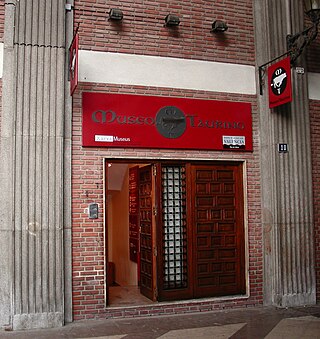
The Bullfighting Museum of Valencia is located in the Doctor Serra passage number 10 in Valencia, (Spain), in a side passage of the bullring of Valencia, in the center of the city.
Sight 21: Falla del Convent de Jerusalem - Matemàtic Marçal
The Falla nº 12 Convent Jerusalem - Matemàtic Marçal is a falla in the city of Valencia, located in the streets of the same name.
Wikipedia: Falla del Convent de Jerusalem - Matemàtic Marçal (CA)
Sight 22: Iglesia Parroquial de Cristo Rey
The church of San Vicente de la Roqueta, today called Cristo Rey, is a Roman Catholic church located in the city of Valencia (Spain). The early church was built on a rock mound where, according to tradition, a martyrium had been built over the tomb of the deacon and martyr Vincent. This saint was martyred in Valencia at the beginning of the fourth century, and his remains were hidden and much later buried in this place, which at that time was outside the walls of late Roman Valencia, and next to the ancient Via Augusta that crossed the city. The remains of the martyr were venerated here for centuries.
Share
Disclaimer Please be aware of your surroundings and do not enter private property. We are not liable for any damages that occur during the tours.
GPX-Download For navigation apps and GPS devices you can download the tour as a GPX file.
